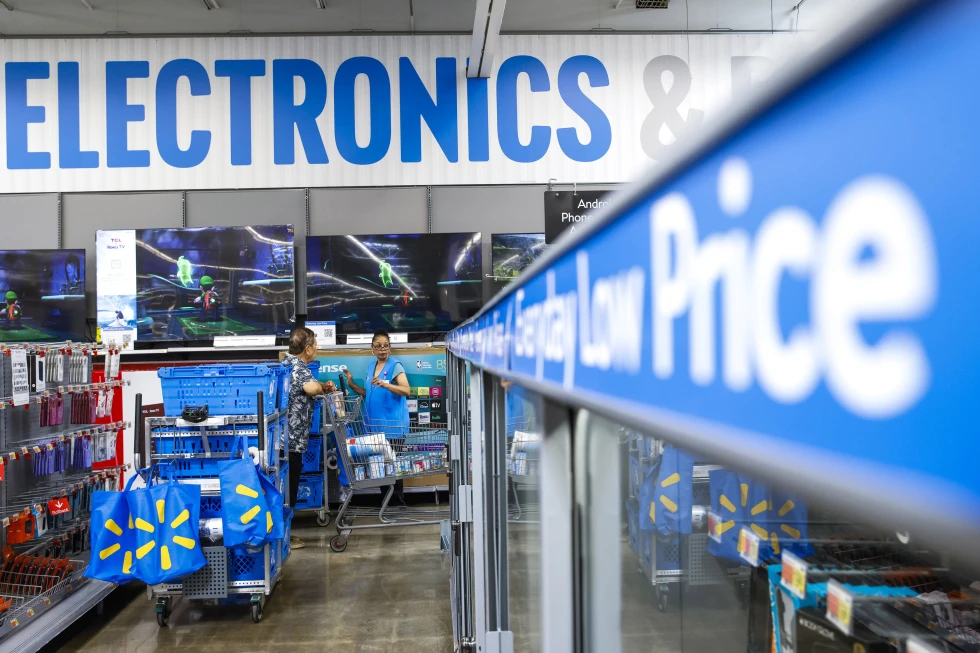The recent announcement by the U.S. Commerce Department indicating a significant uptick in retail sales has provided a much-needed beacon of optimism in the current economic landscape.
A reported increase of 1% in retail spending from June to July, marking the largest increase in a year and a half, alleviates some concerns regarding the potential weakening of the economy under the dual pressures of inflation and rising interest rates.
This essay will explore the implications of this data, examining the resilience of American consumers, broader economic indicators, and the potential policy responses that may arise in this context.
Consumer spending, long regarded as the backbone of the U.S. economy, has shown remarkable resilience despite the significant economic challenges posed by high inflation and elevated interest rates.
The recent retail sales figures reveal a robust willingness among consumers to engage with the marketplace, suggesting that underlying consumer confidence remains intact.
The increase in spending was broad-based, with retailers across various sectors, including auto dealers, electronics and appliance stores, and grocery stores, reporting strong sales gains.
This collective performance indicates that consumers are gradually adapting to the current economic environment, squeezing spending from their budgets while taking advantage of rising wages and accrued savings.
Moreover, the July data demonstrates that purchasing power has not entirely eroded despite inflationary pressures. When adjusted for inflation, sales still registered a noteworthy increase of approximately 0.8%.
The stability of consumer expenditures is critical, as consumer spending accounts for roughly two-thirds of U.S. economic activity. Thus, a resilient consumer base is vital for sustaining economic growth.
In response to the encouraging retail sales data, economists, particularly those at Morgan Stanley, revised their growth forecasts upward for the July-September quarter.
A new projection of a 2.3% annual growth rate, up from an earlier estimate of 2.1%, reinforces the narrative of an economy that, while slowing, remains fundamentally strong.
This follows a robust expansion of 2.8% in the preceding quarter. These figures suggest that the U.S. economy is on course for what many economists describe as a “soft landing,” where the Federal Reserve’s attempts to mitigate inflation through interest rate hikes do not lead to a recession.
Michael Pearce of Oxford Economics aptly remarked that “the ongoing resilience of consumer spending should ease recession fears.”
This sentiment has translated into market behavior, with expectations shifting toward the Federal Reserve potentially enacting modest interest rate cuts in the near term.
Such adjustments would aim to balance the need for combating inflation without stifling the economic activity that is currently gaining momentum.
Beyond retail sales, various economic indicators point to a fundamentally sound economic backdrop. The labor market remains robust, as evidenced by data showing that businesses are largely retaining their workforce and managing to keep layoffs at bay.
Furthermore, the rising wages experienced by many workers have supplemented household financial surfaces, allowing consumers to maintain spending levels even amidst climbing costs.
Notably, average wages have experienced a slight uptick, and upper-income households have benefited significantly from rising stock prices and home values over the past three years.
Increased wealth among higher-income brackets can significantly impact overall consumer spending. The psychological effect of wealth accumulation leads to more discretionary spending, reflected in increased purchases of goods and services.
For instance, the fact that auto sales surged by 3.6% in July, the most considerable increase since January 2023, demonstrates a reaffirmed consumer confidence in large-ticket purchases, which had waned significantly in the past few years due to external pressures.
Despite the favorable developments, caution is warranted due to potential challenges lurking on the horizon. Some economists express concern that a substantial portion of current consumer spending may be driven by the increased reliance on credit.
As interest rates have climbed, the costs associated with borrowing have also risen, highlighting the potential risks of accumulating debt at unsustainable levels.
If interest payments become excessively burdensome for households, there exists a risk that consumer spending could contract in the future.
Furthermore, while the data presents a positive outlook, it is imperative to recognize that broader economic conditions remain volatile.
Factors such as geopolitical tensions, supply chain disruptions, and long-term shifts in consumer behavior due to the pandemic could significantly alter the economic landscape.
Continued monitoring of consumer sentiment and spending habits will be essential for policymakers and economists alike.
The recent cooling of inflation may provide a much-needed reprieve for American households, as evidenced by the latest data released by the government indicating a modest increase in consumer prices of just 2.9% in July compared to the previous year, marking the lowest year-over-year inflation rate since March 2021.
This trend is further underscored by a decline in core inflation, which excludes the often volatile prices associated with food and energy, having dipped for the fourth consecutive month.
Consumer behavior is evolving; while Americans continue to demonstrate a willingness to spend, they are increasingly inclined to seek out bargains, a phenomenon that Walmart, the country’s largest retailer, has capitalized on.
The retailer reported robust sales figures for the three-month period ending July 31 and increased its sales outlook for the year, indicating a strong consumer base despite prevalent economic challenges.
Moreover, the shift towards more economical shopping venues is observable as many consumers gravitate towards discount outlets.

Notably, McDonald’s, despite experiencing a decline in global same-store sales for the first time in nearly four years during the second quarter, has introduced initiatives such as a $5 meal deal in U.S.
locations to retain customer interest and combat rising prices. As illustrated by the experiences of individuals like Evan Louey-Dacus, a 22-year-old corporate event planner in New York City, the pressures of inflation have significantly altered spending habits, leading him to favor discount grocers and seek cost-effective alternatives such as rice over vegetables and deli meats over eggs.
Additionally, Louey-Dacus has embraced the trend of purchasing second-hand items from thrift stores and capitalizing on open-box deals, exemplified by his recent acquisition of a discounted laptop.
Arie Kotler, the CEO of Arko Corp., a convenience chain based in Richmond, Virginia, corroborates these observations, noting a marked reduction in consumer spending on discretionary items such as snacks and candy bars since May, which he attributes to the burdensome high interest rates on credit cards that have reportedly maxed out for many consumers.
Collectively, these trends suggest a significant behavioral shift as households adapt to the realities of a changing economic landscape, prioritizing affordability while navigating persistent inflationary pressures.
The recent data on retail sales serves as a critical indicator of the resilience of the U.S. economy amidst challenges posed by inflation and rising interest rates.
The willingness of American consumers to spend remains a vital component of economic activity, projecting a positive outlook for the near future. However, it is equally essential to acknowledge the potential headwinds, notably the increasing reliance on credit and the broader economic landscape’s volatility.
As the Federal Reserve and policymakers consider their strategies in navigating these dynamics, a balanced approach will be crucial to fostering sustained economic growth while mitigating risks associated with inflationary pressures.
Moving forward, the engagement of robust economic policies and active monitoring will be requisite to ensure that the foundation of economic resilience remains steadfast in light of evolving challenges.
